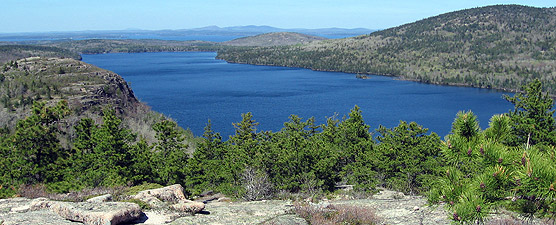 |
 | |
  | |
|
|
|
|
Acadia National Park
Lakes and Ponds
|
|
|
|
|
|
 |
|
Lakes and ponds add shimmering contrast to Acadia's forested and rocky landscape. They cover about 1,052 ha (2,600 acres) of the park, which is equivalent to approximately 7.4% of its area. Within or adjacent to the park, you will find 14 Great Ponds (natural bodies of water greater than 4 hectares/10 acres) and 10 smaller ponds.
Monitoring data collected since the early 1980s show that most of Acadia National Park's lakes and ponds have excellent water quality. They are integral to ecosystem health and function and allow visitors to enjoy a variety of recreational pursuits. Protection of the scientific and scenic attributes associated with the park's lakes and ponds and their use as a source of public drinking water were significant factors in the park's establishment.
Great Ponds and ponds that serve as local water supplies have a number of usage restrictions, which may include watercraft restrictions and other regulations. Please obey posted signage in these areas.
Read the lake and pond FAQ to learn more about these features, including maximum depth and which ponds are considered Great Ponds.
|

|
| NPS/Todd M. Edgar |
| Eagle Lake is one of the park's Great Ponds. |
|
|

|
 |
|
|
|
|
|
 |
|
Did You Know?
The Guide's Guide to Acadia National Park, originally created to share important information about the park's facilities and natural and cultural resources with commercial guides, is available to the public on this website. The guide contains everything you would want to know about the park.
more...
|
|
|
|
Last Updated: December 28, 2007 at 10:24 EST |






